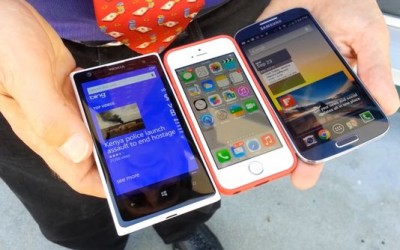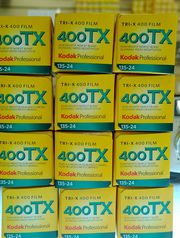Best Camera Sensor: iPhone 5S VS. Nokia Lumia 1020 VS. Galaxy S4

We live in a time when smartphone cameras are used more than traditional cameras. Of course, professional photographers will never give up on their DSLR cameras in favor of a smartphone camera, but average users are starting to ditch traditional cameras in favor of their smartphones’ cameras. There are many reasons for this: one would be the fact that a DSLR is heavy and hard to carry around while your smartphone is always with you so it is more easy to get your smartphone out of the pocket and take a picture. Another reason is the increased quality of pictures taken with a smartphone camera; while it can’t be compared to a DSLR, smartphone camera sensors have increased substantially over the years and are now as good as a traditional non DSLR camera. One least reason would be the simplicity of sharing a picture, almost instantly after taking it.
This month, Apple unveiled the iPhone 5S with a new camera sensor and a ton of features, claiming it is the best camera to ever be included in an iPhone. In this article we will compare iPhone 5S’ camera sensor with Nokia Lumia 1020′s camera sensor and Samsung Galaxy S4′s camera sensor. The recently announced Nokia Lumia 1020 is a Windows Phone 8 smartphone and it has the most advanced camera sensor that has ever been used in a smartphone – the camera sensor has 41 MP (two times as many as any consumer camera) and includes features that any professional photographer would like. The Samsung Galaxy S4, the iPhone’s rival, has a 13 MP camera sensor with plenty of features of its own.
Specs
We will start with the iPhone 5S. Apple’s new flagship smartphone comes with an 8 MP camera, just like its predecessor, the iPhone 5, but features larger sized pixels. iPhone 5S’ camera sensor has pixels that are 15 percent larger than the iPhone 5. Besides larger sized pixels, iPhone 5S’ camera sensor also features a larger aperture (f/2.2 as opposed to f/2.4); a larger aperture translates in better quality for pictures taken in low light environments (indoors, evenings etc.).
Other features include a burst (or continuous high speed) mode that allows you to take up to one hundred pictures in fast succession by holding your finger on the shutter; burst mode is perfect for when you want a perfect picture of a moving person (or pet). Another interesting feature is the ability to capture slow motion videos at 120 frames per second. It also has dual “True Tone” flashes – one amber LED and one white LED, which are variably used based on the color temperature of the photo to improve color balancing. There is also automatic image stabilization, a feature that will help you take clear pictures even at max zoom level.
The iPhone 5S will be launched with three internal storage options: a 16 GB model, a 32 GB model and a 64 GB model, enough for to store all your taken pictures. It also comes with a 4 inch display capable of a resolution of 1136 x 640 pixels and a pixels per inch density of 326.
The Samsung Galaxy S4, comes with a higher resolution camera sensor than the iPhone 5S (13 MP) that offers 12 shooting modes such as automatic, panorama, night shot, sports etc. It also allows Full High Definition video recording at 30 frames per second. It also includes features such as digital image stabilization, face and smile detection, and exposure compensation.
The Samsung Galaxy S4 comes in two internal storage variants: a 16 GB model and a 32 GB model. However, you can increase storage capacity up to 64 GB with a microSD card. It is also equipped with a 5 inch display, capable of a Full High Definition resolution (1080p) and a pixels per inch density of 441.
The Nokia Lumia 1020 is in a different league than the iPhone 5S and the Samsung galaxy S4 when it comes to camera sensors. Nokia Lumia 1020 comes with an incredibly high resolution camera sensor of 41.3 MP BSI CMOS image sensor (it is actually a dual sensor – 41 MP for the big files and 5 MP the small “auto” files). Besides the incredibly high resolution of 41 MP, Nokia Lumia 1020′s camera sensor also features a large aperture (f/2.2 just like the iPhone 5S) and a lens by Cark Zeiss; it also features optical image stabilization, xenon flash and full manual controls and auto controls. Unlike all other smartphone cameras, Nokia lUmia 1020′s camera is not completely automatic; instead it offers a lot of control to the photographer: you can adjust the white balance, focus and shutter speed.
The Nokia Lumia 1020 comes in a single internal storage variant: a 32 GB model. This can quickly become a problem since a picture captured at full resolution will easily occupy 10 MB or even higher and there is no slot to increase storage. The Nokia Lumia 1020 is also equipped with a 4.5 inch display, capable of resolution of 1280 × 768 pixels and a pixels per inch density of 334.
The comparison involved taking pictures in a local Tuttle Cameras shop, in different lighting conditions: daylight and fluorescent that gives a yellowish sheen to your picture’s background (that is unless your smartphone’s camera is smart enough to compensate). The iPhone 5S and the Samsung Galaxy S4 both have a feature that automatically compensates; the Nokia Lumia 1020 however, does not, instead letting you manually compensate. There is a white balance override in the Pro section of the camera app, but it still did not offer a good enough image.
However, in conditions of natural light, things change. While the picture captured with the Samsung Galaxy S4′s camera was just ok, the iPhone 5S’ camera took a sharp pictures. However, it was the Nokia Lumia 1020 that offered the best quality this time around with the sharpest picture worthy of a 41 MP camera. Cropping the picture captured with the Nokia Lumia 1020 in natural light conditions in post processing reveals how ultra sharp it actually.
While the focus of the comparison is of course image quality, we need to also write about ease of use. While both the iPhone 5S’ and Samsung Galaxy S4′s cameras are easy to use, just like any other smartphone camera (simply open the camera app and take a picture), Nokia Lumia 1020′s camera is a bit more complicated as it offers two versions of the usual camera app: a Pro version and an Auto version. While the Auto version of the camera app is simple enough to use, the Pro version is more complicated, in part due to cluttered user interface with small and hard to read icons. Of course, you can get used to it eventually but it makes a pretty bad first impression (and it is pretty hard to use until you get used to it).
As you know, smartphone cameras perform quite well when shooting in natural light conditions (outdoors for example); problems appear when shooting in low light environments (indoors, in the evening, at parties etc.). That is when picture quality starts to drop. In a low light environment test (a dark closet with a half opened door), the iPhone 5S’ camera performed ok, Samsung Galaxy S4′s camera captured the worst image (no clear detail being distinguishable) while the Nokia Lumia 1020 once again offered the best quality picture: even though the picture was captures in a very dark environment, Nokia Lumia 1020′s camera behaved great and the picture was very clear, as if it was taken in soft natural light conditions.
Conclusions
The Samsung Galaxy S4 has great specs, it is a very powerful smartphone and has the best High Definition display of the three (in fact it has one of the best smartphone displays to date), but its camera sensor is nothing mind blowing. In fact, it is quite average in terms of picture quality (even for a smartphone). When taking pictures in natural light conditions, Samsung Galaxy S4′s camera performed fine, but in low light conditions it showed its limit. Pictures that were captures with the Galaxy S4 in low light conditions were not sharp, not clear so we can see it was easily the worst camera of the three.
If photography is your hobby, then the Nokia Lumia 1020 will probably be the best smartphone for you when it comes to camera sensor. Especially for pictures captured in low light environments and for overall sharpness. But as we mentioned, the controls of the Pro version of the camera app are not as intuitive as they should be. There are also some problems with white balance and a minor inconvenient is the fact that the Nokia Lumia 1020 is a heavy smartphone, at least heavier then the other two.
If you are not a photographer or photography is not your hobby, then you should also be aware of the low number of available apps for the Nokia Lumia 1020. The Windows Phone 8 ecosystem is not as big as the iOS ecosystem. For example, there are 150,000 apps available for the Nokia Lumia 1020 (at least according to Microsoft), while the iOS and Android ecosystems offer almost 1 million apps. Of course 150,000 is by no means a small number so odds are you will find apps to suit most of your needs. There are however important apps that are not available on Windows Phone 8; these include Instragam (a very popular photo app for smartphone users), Vine (think Twitter but with videos), Camera+ and Snapchat. Windows Phone 8 versions of these apps are expected to be released sometime in the future.
The iPhone 5S is a bit of a surprise as we didn’t expect it to perform so well, especially against the Nokia Lumia 1020. iPhone 5S’ camera sensor is basically a point and shoot camera. The only test where it failed was when taking a picture in a dark (very low light) area. Other than that, iPhone 5S’ camera performed admirably, with consistently good pictures. If you think about it, unlike the Nokia Lumia 1020, the iPhone 5S is primarily a device made for checking emails, web surfing and phone calls, not for photography aficionados.
And while the images captured with iPhone 5S’ camera were not as sharp as those captured with Nokia Lumia 1020′s camera, they were still sharp enough to offer good quality. Not to mention the images had (in 9 out of 10 times) better color. The camera app is also easier to use on the iPhone 5S than on the Nokia Lumia 1020. And even though iPhone 5S’ display is not as impressive as Galaxy S4′s or Nokia Lumia 1020′s, the iPhone 5S has a very capable camera sensor. In the end, it will come down to choosing between the manual control the Nokia Lumia 1020 offers or the overall good quality provided by iPhone 5S’ camera sensor.













